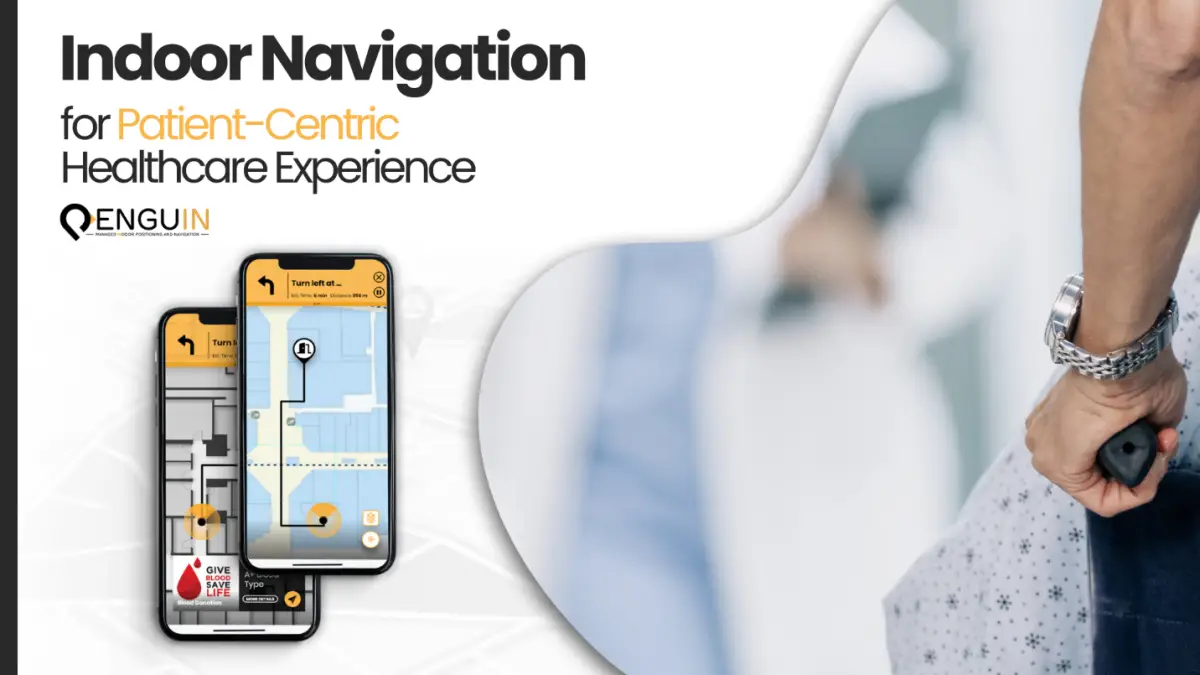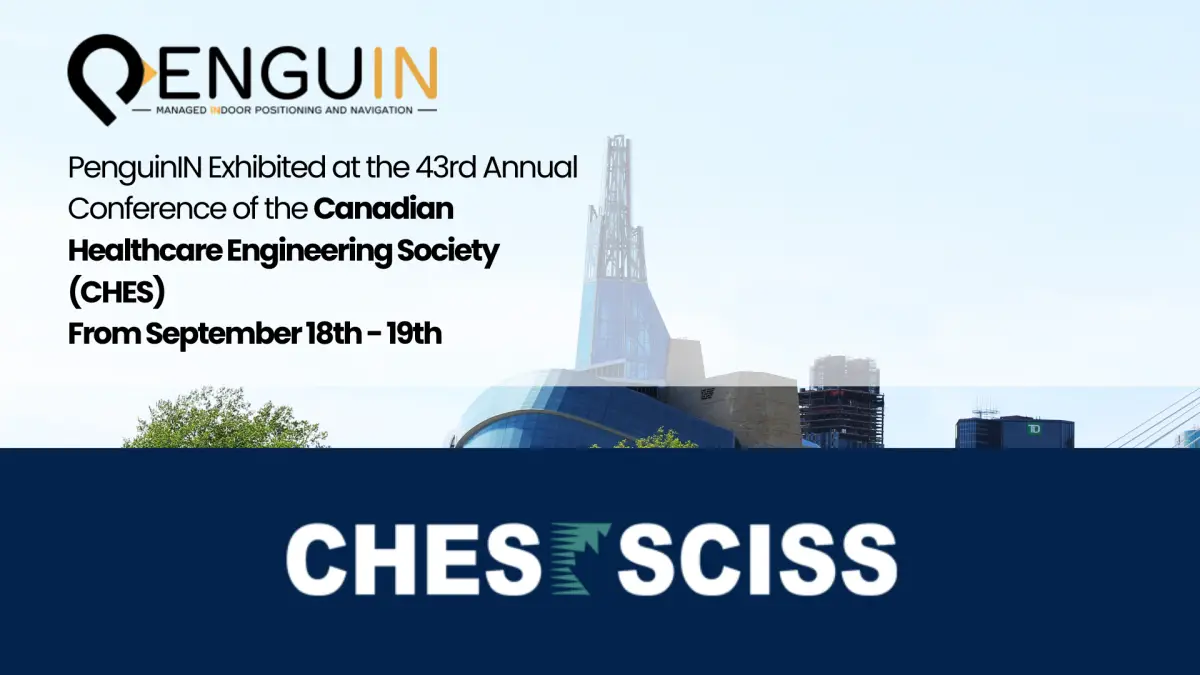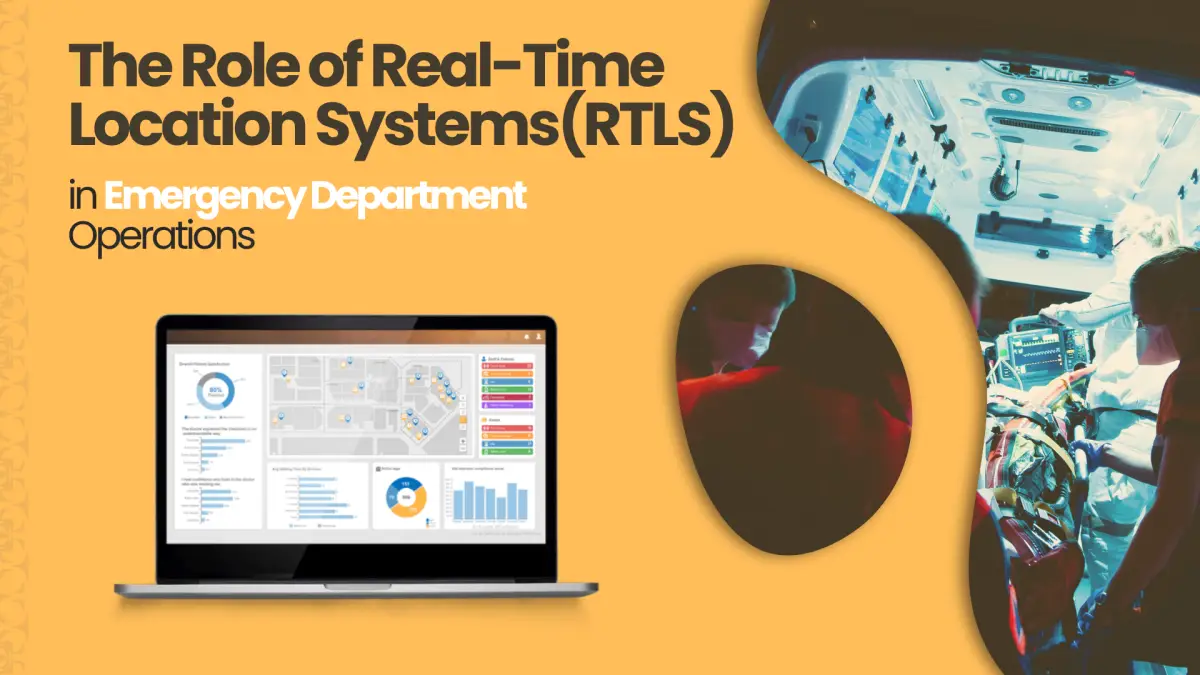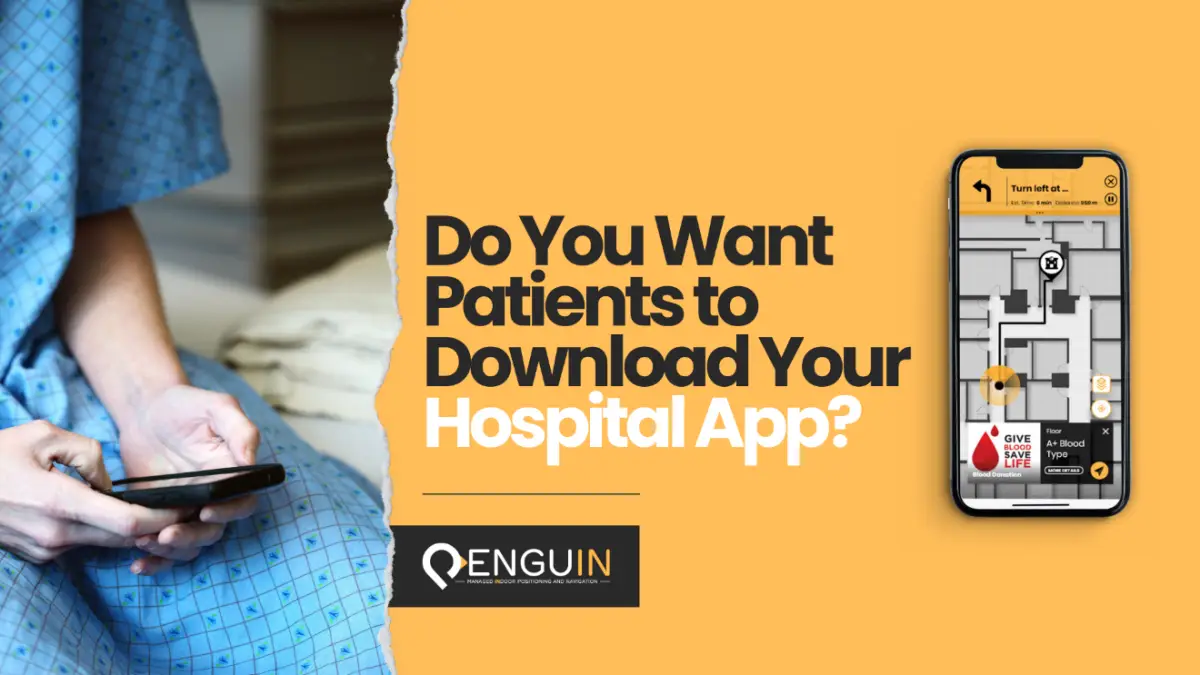In the pursuit of putting patients at the center of the health care experience, healthcare institutions confront the challenge of guiding individuals through their large, intricate buildings with multiple floors and interconnected sections. Even healthcare workers, whether they are temporary or long-serving staff, sometimes encounter difficulties navigating hospital facilities. However, it is often the patients who struggle the most with finding their way.
Historically, hospitals relied on conventional methods like signage and getting assistance from individuals at the front desk to address navigation issues. Nevertheless, these approaches had their limitations and didn’t consistently offer straightforward navigation solutions.
In today’s healthcare landscape, a noticeable transformation is underway. There is a growing emphasis on enhancing the patient’s journey through the adoption of smarter solutions. Contemporary healthcare facilities are incorporating technologies such as location data and user-friendly Bluetooth-enabled applications to assist patients, their families, and the staff.
Use-Cases for Indoor Navigation in Healthcare
Indoor navigation and hospital wayfinding solutions in healthcare boast many use-cases, each contributing to a more efficient and patient-centric healthcare experience.
Seamless Patient Wayfinding: The most apparent use-case is guiding patients through the complex layout of hospitals, also known as hospital wayfinding. Real-time, step-by-step directions within a hospital app alleviate patient anxiety and ensure they reach their appointments or desired destinations without hassle.
Accessibility Enhancement: Indoor navigation empowers patients with mobility challenges by providing accessible routes and live updates. It promotes inclusivity, reducing anxiety and saving valuable time for individuals who require extra assistance.
Location-Based Messaging: In addition to digital wayfinding, indoor navigation apps can offer location-based services to create a more contextual patient journey. The apps can offer notification features to make suggestions and alert users when they get near a significant point of interest (POI).
Integration with Electronic Health Records (EHR): Indoor navigation solutions can integrate with a hospital’s Electronic Health Record (EHR) system. EHRs are like digital directories holding patients’ appointment details, medical history, and test results which the patients can access via the navigation app, providing a comprehensive healthcare experience in one place.
Emergency Preparedness: In critical situations like emergencies or Code Blue scenarios, indoor navigation equipped with Real Time Location Systems (RTLS) provides instant information on the nearest available personnel and proper emergency procedures. This timely response can make substantial results.
The Outcome of Indoor Navigation in Healthcare
The implementation of indoor navigation solutions yields both short-term and long-term outcomes, significantly enhancing the patients visitors and staff experience.
Short-Term Benefits:
- Efficiency: Patients can navigate the hospital quickly, reducing their length of stay therefore contributing to reducing wait-times for other patients and reducing missed appointment rates.
- Reduced Anxiety: The ease of finding their way decreases patient stress, improving their overall experience.
- Enhanced Staff Productivity: Hospital staff will also be equipped with such navigating tools and mobile apps to reach their destinations at a quicker time and they can focus on patient care instead of providing directions, leading to better service.
Long-Term Outcomes:
- Patient Loyalty: Enhanced patient experiences foster loyalty, with patients more likely to return for future healthcare needs.
- Positive Reputation: Hospitals that prioritize patient experience through indoor wayfinding strategies build positive reputations, attracting more patients.
- Streamlined Operations: In the long-term context, hospitals with efficient indoor navigation and hospital wayfinding solutions provide improved operational efficiency, scoring better HCAHPS scores, and guarantee compliance with top-standard programs.
Psychological Effects on Patients and Healthcare Staff
Indoor navigation solutions in healthcare exceed mere convenience; they have a profound impact on the psychological well-being of patients. One of the leading causes of in-hospital stress arises from their unfamiliarity with the surroundings [1]. While hospitals cannot entirely eliminate this unfamiliarity, they can offer a solution that promotes transparency. Providing patients with an outline of the facility and offering a step-by-step guide through it can undeniably alleviate this challenge.
Improved Staff Satisfaction: Hospital wayfinding solutions play a pivotal role in boosting the job satisfaction of healthcare staff, particularly newcomers to the team and those who are still in training.
– It was found that there is a positive association between education and a demand for navigation improvements, either through mobile applications or other ways. Respondents with tertiary education were more interested in navigation improvements and more willing to use mobile navigation applications. [2]
By providing a reliable means for staff members to confidently navigate intricate hospital environments and being relieved from the duty of guiding patients, these solutions effectively alleviate stress. This not only eases their transition but also grants them more time to focus on providing superior medical services and dedicating themselves to learning and training. Consequently, healthcare professionals experience increased job satisfaction, fostering an environment where they can excel in their roles and continually enhance their skills.
The ROI of Indoor Navigation in Hospitals
When evaluating the return on investment (ROI) for indoor navigation in healthcare, it’s essential to consider various financial aspects. Here, we outline key points to illustrate the financial advantages:
Cost Savings: Implementing indoor navigation technology significantly reduces operational costs associated with traditional physical signage. Health systems typically rely on costly physical signs and allocate staff to guide visitors. These expenses include initial sign creation, updates, printing maps, and maintaining staff for visitor inquiries. With digital navigation tools, these costs diminish significantly, as digital maps can be easily updated at no extra expense. This not only reduces the reliance on physical signs but also minimizes ongoing expenditures.
Improved Staff Efficiency: Beyond cost savings, indoor navigation technology enhances staff efficiency by automating the process of guiding patients and visitors. With digital navigation tools and wayfinding systems in place, healthcare personnel can allocate their expertise where it matters most—providing patient care and medical assistance. This reduction in staff time spent on giving directions and answering questions contributes to cost savings and allows healthcare professionals to focus on their core responsibilities.
Increased Revenue: Indoor navigation and hospital wayfinding solutions enhance the overall patient experience. A more positive experience results in higher patient satisfaction, which in turn can lead to increased patient retention and referrals. These satisfied patients are more likely to return for future healthcare needs, thus contributing to higher revenue for the healthcare facility.
The Advantage of integrating Indoor Navigation and Hospital Wayfinding Solutions with Existing Healthcare Systems
The integration of indoor navigation with various healthcare systems, including duress call, registration, and more, offers a comprehensive technical advantage. It streamlines data sharing and system compatibility, creating a unified healthcare environment. This automation enhances patient safety by expediting emergency responses and improves administrative efficiency by automating tasks like patient registration. Furthermore, it results in improved wayfinding, optimizes resource allocation and reduces operational costs. In essence, this technical integration fosters a cohesive healthcare ecosystem, benefiting both patients and hospital operations.
Indoor Navigation Technology: PenguinIN‘s BLE Beacon-Based Solution
When it comes to indoor navigation in healthcare settings, BLE (Bluetooth Low Energy) solutions emerge as the preferred choice. By adhering to BLE standards and leveraging PenguinIN’s advanced algorithms, healthcare facilities can access state-of-the-art smart solutions. Let’s delve into the exceptional features of BLE technology.
Precision: BLE beacons offer excellent accuracy in tracking real-time positions, even within intricate and multifaceted structures. This precision ensures seamless navigation for users, with their location displayed accurately on the screen.
Efficiency: BLE solutions are renowned for their minimal power consumption, resulting in extended beacon lifespans and reduced maintenance requirements.
Scalability: BLE beacon networks can effortlessly expand to accommodate the evolving needs of healthcare facilities. This adaptability ensures a scalable solution that grows with the institution.
Compatibility & Mobile Usage: BLE technology seamlessly integrates with established hospital systems, thereby improving overall connectivity and promoting a unified healthcare environment. The versatility of BLE solutions extends to mobile phones, ensuring accessibility for a broad user base. Furthermore, many BLE applications are compatible with existing hospital apps, potentially driving increased downloads and engagement with local hospital applications.
Learn more: Do you want patients to download your hospital app?
Reduced Disruptions: Thanks to its low power consumption, BLE technology minimizes disruptions to healthcare services, ensuring continuous and uninterrupted care for patients.
As healthcare institutions increasingly prioritize patient-centric care, indoor navigation solutions are becoming valuable tools for improving the healthcare experience for both patients and staff. These solutions enable immersive features such as location-based messaging and data analysis, empowering healthcare administrators to make informed, data-driven decisions and gain valuable insights from the movements of personnel within the facility. Additionally, location-based messaging has the potential to enhance the educational processes in university hospitals, providing a multi-layered approach to improving healthcare services.






